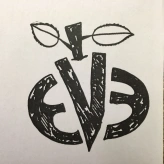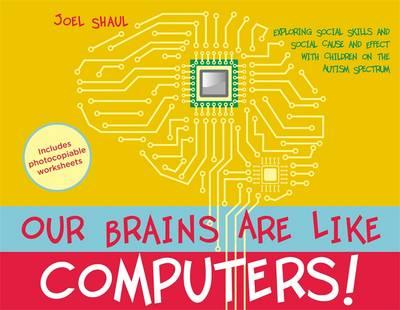Cue in Dance In The Schools 2016!
I had the ultimate pleasure of working again with the Maria Baldwin School in Cambridge for this year’s Dance In The Schools Month. I began forging a relationship with the second grade teacher’s 6 years ago and it only keeps getting better each year I go back. This year I had the extra enjoyment of bringing not only my yoga program but I also brought flamenco to the music classes. Together these two classes make up the basis for Always Be Dancing Mindful Movement. This opened up a whole new angle to me for bringing mindfulness into this school. Pairing me up with the music teacher only enriched my musical knowledge, so it was truly a win-win situation for all! The second graders received a veritable cornucopia of mindfulness through dancing, Yoga posing, breathing, and meditating.The positive responses I gathered from the students and the teachers were full of positive remarks and full of enjoyment.
Please comment on what worked regarding the content of this program, e.g., use of theme, connection of movement/dance to curriculum, etc. Did you or the Classroom Teacher notice any changes in any of the students’ behavior, focus, ability to do whatever you were teaching? Please describe if possible.
The kids were all so connected to learning-it is a great environment. The staff and kids are very engaged and even the few children who are on the spectrum or emotionally developing interact with the group and learn alongside their peers. I often work with special needs and other high risk populations and I have developed a compassionate and effective way of bringing what I am teaching to these groups. I appreciated that every student tried what I offered to them. The music students learned about the history of flamenco and the gypsies, styles of flamenco, the emotional content of flamenco, the art of clapping, singing, dancing rhythmically and also rhythmic footwork. In yoga, we used the basics of yoga, breath-work, poses and meditation, to reinforce emotional control. In the end, they students created a book for me which reinforced their engagement with both my yoga and flamenco classes.
Did you share any materials, resources, music, ideas, props with the Classroom Teacher so they could continue after your last session? If so, what?
MUSIC: I sent a musical link and we made a video of our dance. I also created a special document that gave the history of flamenco and wrote out a simplified version of the choreography for reference.
Here is the document I created for music: https://docs.google.com/document/d/1gpZnnLeYRu33aZqIooSvV5tm7mTxjAdOMu_qOCr_HEo/edit?usp=sharing
YOGA: https://docs.google.com/document/d/1IKRDDtAAfwcO4vL3EmU381SCi8YEGRAY0g2X2FOlk0o/edit?usp=sharing
Describe the nature of your collaboration with your Classroom Teacher – before your sessions (interaction with teacher, co–planning of materials, other), during your sessions (co-teaching, assessing the process, altering plans), after you finished (examples of follow-up lessons created by you and/or the Classroom Teacher, other)
MUSIC: After reaching out to the music teacher, he sent me some ideas for how we could collaborate his music and my dance class, which really helped me to mold my program.
We came up with:
*Phrase *Form *Different rhythmic values *Dynamics (volume) *Improvisation/Composition
We worked with each throughout the classes, him adding in his teaching methodology (using the Takadimi system) which opened my eyes to new ways of being able to teach ideas and my own creative style of teaching which only enhanced his system.
YOGA: I was in contact with the two second grade teachers prior to my visit. They asked me to work with their students on Socio-Emotional learning and the executive functions, to enable a string and fruitful learning environment for all. I mapped out 4 programs that I would use as the basis of the 4 sessions.
Eve’s Awesome Yoga Day one was about using yoga to calm the body, mind and energy and playing with the differences between silence and non-silence, which can mean vocally, mentally and physically. Here I also taught about the brain and the concept of neuro-plasticity; Day two, healthy eating; Day three, Rhythm and movement; Day four, Cooperation.
Do you feel/think you were effective? Why/why not? What did you learn? What challenges did you face? (This is a food for thought question, not judging or criticizing you.
MUSIC: This was extremely effective. Every time I came into the room, the kids all brightened up and beamed, totally ready to dance/do yoga. I could see in their faces their joy! I loved learning about Takadimi as it brings in a Kathak element to my Flamenco teaching, as Kathak is seen as one of the roots of Flamenco.
YOGA: The kids learn in a very short amount of time about how they can control their brains, that brains change, how to be strong, focused and self-effective. How to work by themselves and cooperate in a group. How to be still and to move; to be quiet and loud; to be fast and slow. They learn about emotional control and how they can learn in a different environment than they are usually presented with.









 Exploring how to communicate social cause and effect with children with Autism Spectrum Disorder (ASD) by using computer diagrams and associations is a truly remarkable concept. Joel Shaul’s use of this metaphor, that “our brains are like computers,” creates a clear and effective communication tool to help children increase their awareness about how their words and actions affect other people.
Exploring how to communicate social cause and effect with children with Autism Spectrum Disorder (ASD) by using computer diagrams and associations is a truly remarkable concept. Joel Shaul’s use of this metaphor, that “our brains are like computers,” creates a clear and effective communication tool to help children increase their awareness about how their words and actions affect other people. S
S


 : Ring the chime and still and quiet with listening ears, to hear the reverberation, the echo, of the bell and just breath. We don’t even have to think of how to breath, because we all breath naturally. We are breathing and we are alive. But now I am asking you to really notice that you breathing. Think about breathing in, filling yourself up like a balloon, and feel yourself breathing out, feeling relaxed, and calm and focused. Let students try ringing the chime. One of the things often noted was how surprised the kids were at how heavy the chimes are.
: Ring the chime and still and quiet with listening ears, to hear the reverberation, the echo, of the bell and just breath. We don’t even have to think of how to breath, because we all breath naturally. We are breathing and we are alive. But now I am asking you to really notice that you breathing. Think about breathing in, filling yourself up like a balloon, and feel yourself breathing out, feeling relaxed, and calm and focused. Let students try ringing the chime. One of the things often noted was how surprised the kids were at how heavy the chimes are.

 ach ball; breath out, feel your belly soften. Gently close your eyes. I will add next time, having the kids lie down and place a bean bag on their belly and have them lift and drop it along with their breath. This can also be done with a rubber duck, and they can pretend it is riding the waves.
ach ball; breath out, feel your belly soften. Gently close your eyes. I will add next time, having the kids lie down and place a bean bag on their belly and have them lift and drop it along with their breath. This can also be done with a rubber duck, and they can pretend it is riding the waves.![color-3B-butterfly%2872%29[1]](https://alwaysbedancing.files.wordpress.com/2016/01/color-3b-butterfly2872291.jpg?w=150&h=135)
 uck song & movements: Rendering of the version that
uck song & movements: Rendering of the version that 









